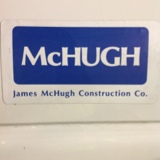Information
-
Document No.
-
Audit Title
-
Client / Site
-
Conducted on
-
Prepared by
-
Location
-
Personnel
Permits
-
Are travel permits required to get the crane on site?
-
Have those permits been applied for and recieved?
-
What are the hours allowed for crane travel? Please have copies of the permits available at all times. If permits have not been received please explain why not.
-
Will there be sidewalk closures?
-
Have those permits been applied for and recieved?
-
Please explain why not.
-
Will there be street closures?
-
Have those permits been applied for and recieved?
-
Please explain why not.
-
Will any hazards like power lines, street lights, train tracks be affected that permits would be necessary?
-
Have those permits been applied for and recieved?
-
Please explain why not.
Contract
-
Is there a signed contract for the rental of the crane and any travel arrangements necessary to get the crane on site?
-
Please explain why not.
-
Who is the supplier of the crane (company/person)?
-
Provide company contact information:
-
Who is erecting or helping to erect the crane?
-
Who is providing the operator(s) for the crane?
-
Name of operator(s)
-
Who is responsible for providing inspection papers for the crane?
-
Have they been provided yet?
-
List of companies that have material being moved with the crane:
Inspection
-
Are the inspection papers orderly and up to date? This includes a copy of 3rd party inspection for the crane within the last 12 months for the proposed crane.
-
Please explain why not.
-
Have copies of all inspection certificates been made and stored for record keeping?
-
Please explain why they have not.
-
Will a Jib that does not travel with the crane (not covered under inspection) be used?
-
A separate 3rd party inspection is required for this type of jib (OSHA standard 1926.1412). Once assembly of the crane with jib is completed the crane MUST NOT go into service until a copy of successful inspection is received by the concrete superintendent. Please provide detailed dates, times, service records and final inspection copies when this is done.
Operator
-
Does the operator have a valid, current license to operate the type of crane from the state and the city where operation is taking place?
-
Please explain why not.
-
Does the operator need to provide a passing urine test before starting work on this job?
-
Has this test been done yet?
-
Please provide the date of test or if test has not been done please explain why not.
-
Has the operator(s) gone through the site orientation program?
-
Please explain why this has not taken place.
Crane set-up
-
Is the set-up site clean, orderly and any dangerous elements (gas cans, oil etc) been removed?
-
Please explain why not.
-
Erection site looking South (show ground under outriggers)
-
Erection site looking North (show ground under outriggers)
-
Erection site looking East (show ground under outriggers)
-
Erection site looking West (show ground under outriggers)
-
Take pictures of any ground obstructions, dangers or structures close to the are the crane will be set up. Include any cracks in the ground, holes, depressions, manhole covers, electrical pipes etc.
-
Take pictures of any overhead obstructions, dangers or structures close to the crane set up area. Include any street lights, train tracks, columns, walls, neighboring buildings etc.
-
Is crane assembly/disassembly needed for the type of crane being used?
-
Please confirm that McHugh's crane assembly/disassembly procedure is being followed. Contact Jim McGeever for sign-off at this juncture prior to proceeding. Fill out following crane Erection/Disassembly questions.
Erection/Disassembly
-
Have all members of the assembly crew gone through the site orientation program?
-
Please explain why not.
-
Do the members of the assembly crew need to be drug tested before working on the site?
-
Has this been done and within any time limits that are required by the job site regulations?
-
Please explain why not.
-
Have all the potential hazards like street lights, power lines, train tracks that might not be a factor in crane operation but DO affect assembly/disassembly been dealt with?
-
Please explain.
Insurance
-
Do we have approved insurance certificated from the Risk Management Office?
-
If YES a copy must be made and filed in the field office. If NO please explain why not.
-
Do you have a sign-off from the Risk Management Office on Insurance? Should have this before proceeding further.
Safety
-
Is a traffic and pedestrian plan in place?
-
Please explain why not.
-
Will flaggers be needed in moving the crane onto the job site or during operations?
-
Provide names of certified flaggers with current cards:
-
Will other trades and/or companies not associated with the crane picks be in the area and exposed to danger from the crane and its picks?
-
Can they be temporarily relocated out of the danger area?
-
Please explain why.
-
Will a Critical Lift Plan (pick over 75% of capacity in current configuration) be needed?
-
You must fill out and go over Critical Lift Plan with the safety monitor, concrete superintendent, operator, riggers and anyone else involved in the pick. Submit a copy of the CLP to the safety manager.
Crane Critical Lift Plan- This must ONLY be filled out if it is determined the crane will exceed 75% capacity of the crane configuration or if multi-crane lifts are used.
-
This must be filled out if it is determined the crane will exceed 75% capacity of the crane configuration or if multi-crane lifts are used.
-
Contractor/rigging company:
-
Date and time of planned lift start
-
Date and time of completion
-
Crane company name and emergency phone #
-
Project:
-
Lift location/nearest buildings:
-
Description of lifting work to be done:
-
Number of items to be hoisted:
-
Crane make and model:
-
Rated capacity (tons):
-
Cranes total boom length for this configuration (main boom only)
-
Jib used?
-
Jib length
-
Jib offset (degrees), if used
-
Will outriggers be fully extended?
-
Explain why not and outrigger setting.
-
Will the lift be based on a 360* crane use and chart?
-
Please explain
-
Maximum boom length required:
-
Maximum pick length required:
-
Is the crane equipped with a LMI or Load (weight) determining instrumentation?
-
Is FAA or airport notification required?
-
Description of Max load:
-
Dimensions of Max load:
-
Picture of Load
-
Weight of max load and how this was determined:
-
What is maximum safe wind speed allowed for picks covered under this lift plan?
-
Will the load be unbalanced?
-
How will the load be leveled during pick?
-
List rigging components- be specific (size, type, number, length, lift beam, capacity, etc.)
-
Maximum length of running rope, block and all rigging:
-
Total gross load (Max load + weight of rigging + added safety factor if Max load is only estimated)
-
Has contractor developed a plan to control and protect vehicular and pedestrian traffic?
-
Submit this plan using picture or attachment.
-
Is a full or partial road closure required?
-
Will load be laid down on permanent facilities such as existing roof or landscaping at any time during pick?
-
Is there a to-scale plot plan showing crane location, adjacent structures, roadways, underground utilities etc within swing radius?
-
Submit this plan using picture or attachment
-
Has the area been surveyed for overhead power lines and other hazards?
-
Will the load or any part of the crane be over any active or operating equipment, piping etc?
-
Will the load be within 15 feet of active electrical lines, pipes, or process system at any time during pick?
-
Show calculations for Maximum Load (picture or attachment) and the maximum lift scenario: A) Max pick radius B) Total gross load C) crane chart capacity @ max pick radius D)% of crane capacity (B/C)
-
Will the crane(s) need to "walk" with loads?
-
Will pick require more than one crane?
-
Is total gross load more than 75% of rated capacity of crane at the max radius?
-
Will the lift pick/carry personnel?
-
The use of a crane suspended personnel platform (basket) is prohibited by OSHA unless there is no safer,practical, conventional means of access to an elevated work area; refer to Cranes and Derricks- 1926.550 for more infromation.
-
Will pick be made over occupied building or facility?
-
Is pick item weighing over 10,000 pounds being up ended (vertically/horizontally)?
-
Is professional engineer analysis required?
-
Provide any additional information you feel is necessary:
-
Provide a picture of any appropriate crane charts.
-
Provide list or picture of rigging.
-
Site ground conditions:
-
Site windspeed range and method of confirmation:
-
Contractor lift director signature
-
Crane company competent person (if different than contractor)
-
Superintendent or Project Manager
-
Safety Manager
GPR info
-
Has the crane supplier provided the maximum outrigger reactions for planned lifting operations?
-
Crane supplier must provide this before crane can be erected. Please explain why not.
-
This information must be copied and stored with the concrete superintendent.
-
Has the crane supplier provided the dimensions of outrigger pads to be supplied with the crane?
-
Please explain why not.
-
Do we have knowledge of existing conditions where the crane is to be erected? i.e. have we dug there before or has any other information been provided?
-
Please provide this information in detail.
-
Does the crane outrigger reaction exceed 25,000 pounds?
-
A GPR of the entire area or the area under the crane pads under the outriggers must be performed. If the ground is unsuitable for GPR (large stones, loose backfill etc) we need to get a Proctor compaction test. Please explain plans for this and provide appropriate documentation to store.
-
Does the GPR report from the testing agency include an executive summary of interpretation of results?
-
The GPR report must include this. Please explain why it does not.
-
Were any voids or subsurface anomalies found in the GPR report?
-
A sign off from a Structural Engineer needs to be provided based on the outrigger loads that will be imposed. Please provide information as to when this will be provided and make sure to keep a record when provided.
Elevated decks
-
Will the crane travel or be positioned on or through an elevated deck?
-
Is there a logistical plan for the route of travel?
-
Has a re-shoring analysis been provided by a structural engineer for the route and operation of the crane?
-
Has the area of travel or operation been protected so that no damage occurs to the existing conditions?
Scope of work
-
What material is planned to be moved with the crane?
-
Do riggers have current crane signaling cards and rigging cards?
-
Does all the rigging (nylon slings, steel chokers, shackles etc.) have the necessary tags/stamps of capacities attached to them?
-
Please explain why not.
-
Has all the rigging been inspected for cleanliness, wear, cracks, abrasions, cuts etc.?
-
Please explain why not.
-
Is a lifting beam required to make any of the planned picks?
-
All lifting beams much be engineered and have documentation. Please have copies of this on hand.
-
What is the "max" picking capacity in this configuration within Ground Bearing Pressure as determined acceptable by GPR?
-
To make sure capacity is not exceeded have the operator(s) and riggers been notified of this "max" capacity?
-
If capacity is more than allowed in that area the operator needs to sign off that he/she is aware that they don't exceed the "max" capacity. Please confirm.
-
What is the heaviest pick planned?
-
Will there be any multi-crane lifts during this crane's operation?
-
OSHA reg. necessitates that a Critical Lift Plan be used for multi-crane lifts. Please fill out CLP.
-
Will a Critical Lift Plan (pick over 75% of capacity in current configuration) be needed?
-
Has this plan been completed and all parties involved in the pick notified?
-
Please explain why not?
-
Will any hazards like power lines, street lights, train tracks etc. be in the path of any crane picks?
-
Please explain in detail.
-
Will the weather be adverse to the crane operations? i.e. is it expected to be (any or all) windy, freezing, raining, lightning, dark at the times when the picks are planned?
-
Please explain the weather conditions and the expected effect on the crane and its operation.
-
Can the ground the crane is on be affected by weather conditions? E.g. downpour of rain turns dirt under outrigger pad to mud and pad shifts
-
Please explain.
Crane technical information
-
Type of crane
- Telescope boom
- Lattice boom
- Wheeled
- Crawler track
-
Crane manufacturer
-
Crane model
-
Length of boom
-
Max capacity at limit of boom reach horizontally
-
Max capacity of crane for configuration planed
Work is finished/clean up
-
Are there plans for the area of crane erection, work and dismantlement to be left as clean or cleaner than when the work began?
-
Please explain why not.
Final checklist and sign-off
-
FINAL CHECKLIST- CHECK THE FOLLOWING BOXES ONLY IF THESE IMPORTANT STEPS HAVE BEEN COMPLETED OR ADDRESSED.
-
Obtained a copy of the cranes currently valid 3rd party inspection.
-
Filed a Critical Lift Plan if the pick exceeds 75% of capacity (or multi-crane pick)
-
Obtained Insurance sign off from Risk Management Office.
-
Followed assembly/disassembly plan with sign off from Jim Mcgeever.
-
Obtained and used a GPR report or a Proctor compaction test (if applicable)
-
Any injuries and/or issues with the crane and its picks MUST be reported to the concrete superintendent and safety manager immediately.
-
PLEASE SIGN AND DATE THIS AUDIT CONFIRMING THAT TO THE BEST OF YOUR KNOWLEDGE IT WAS ANSWERED TRUTHFULLY AND WITH DUE DILIGENCE.
-
Add signature









